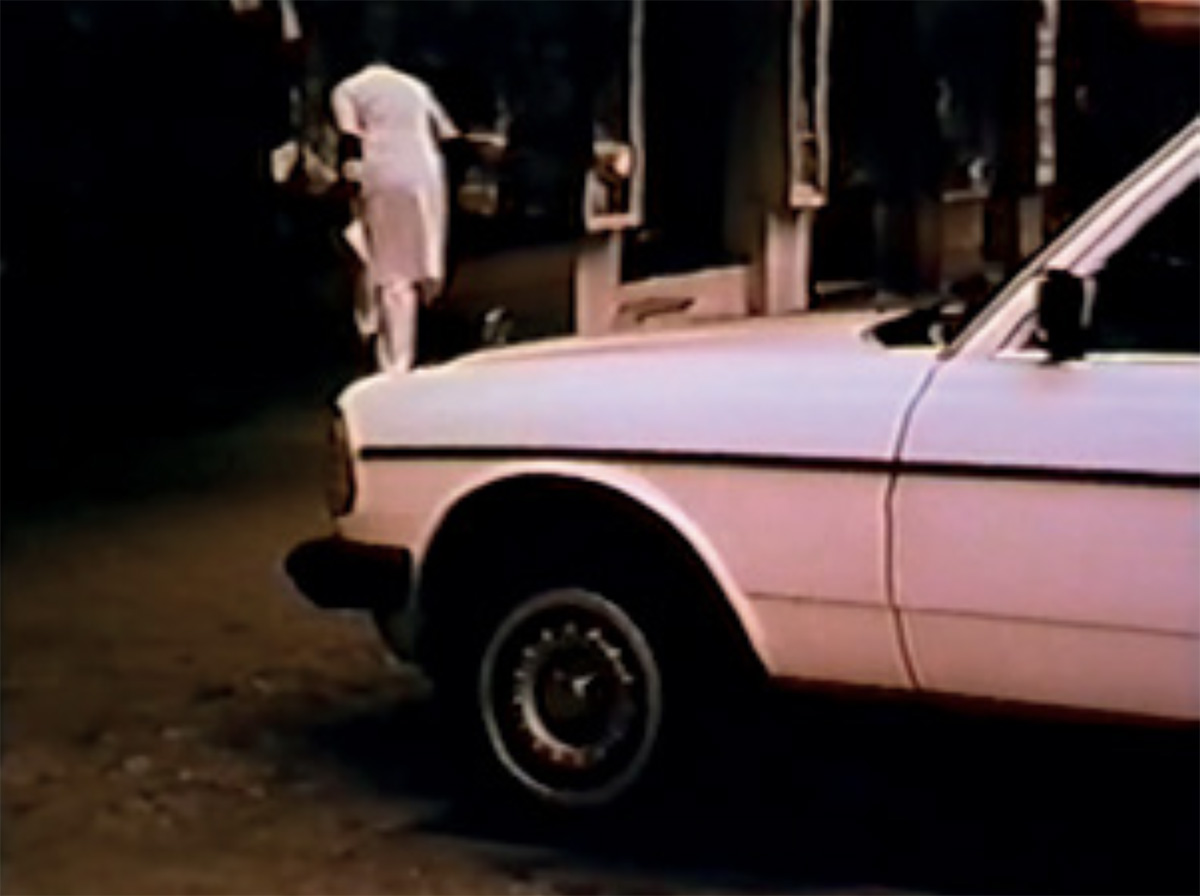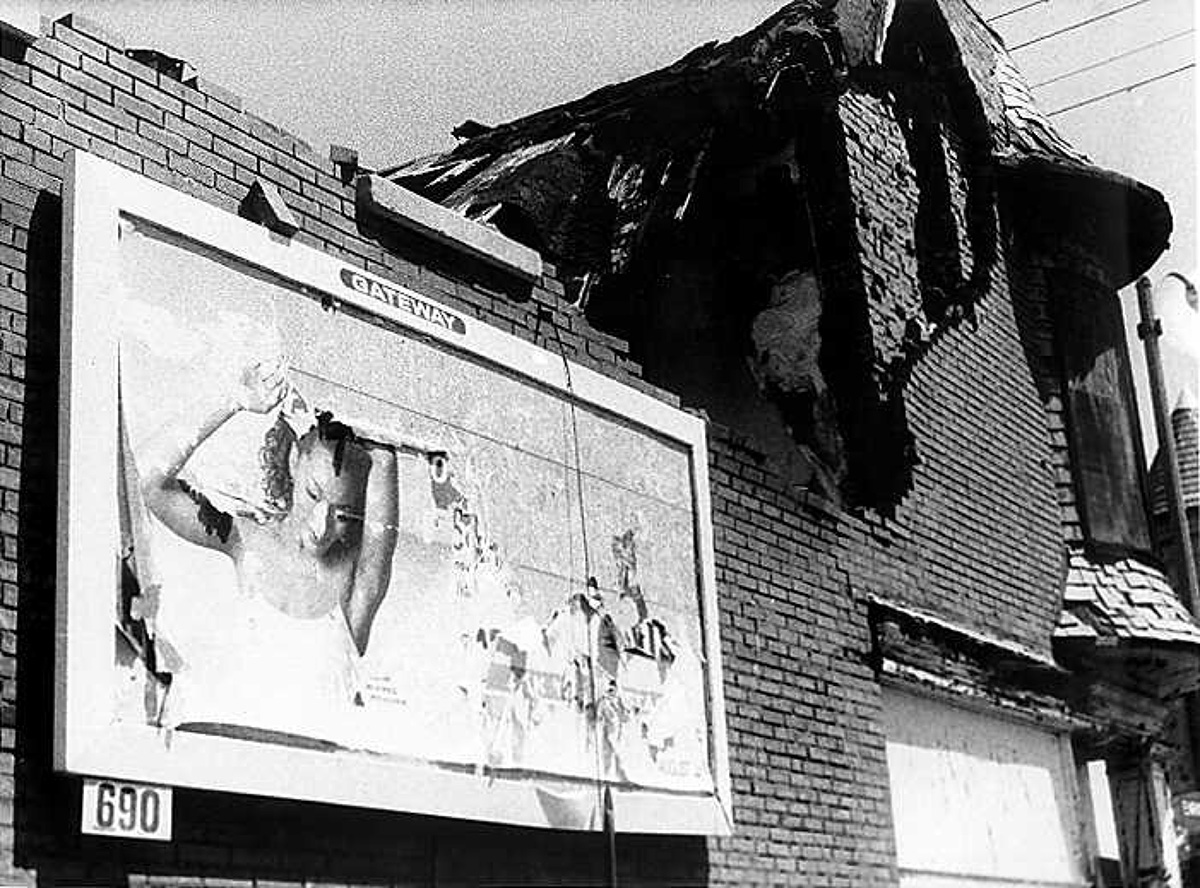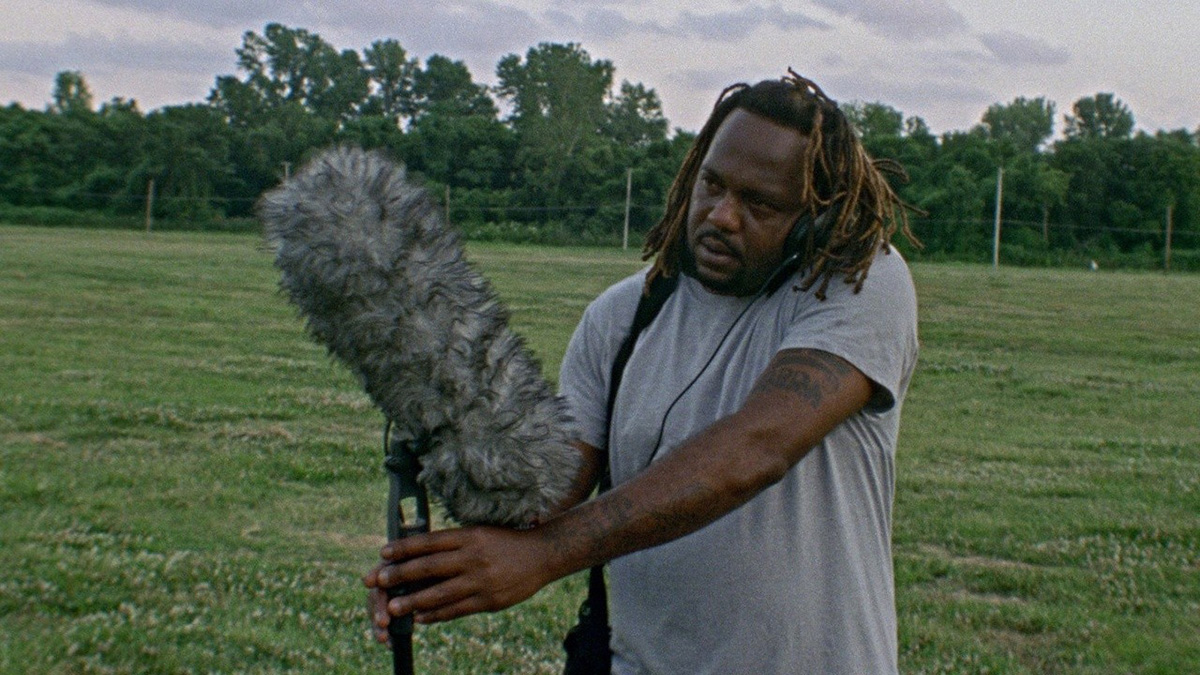Signal — Germany on the Air

Ernie Gehr, the son of German Jewish émigrés, might have called Berlin home had fascism not tragically intervened. The film takes its title from the Wehrmacht propaganda magazine of the same name. Its opening shot is backgrounded by a cropped view of the magazine’s cover. The explicitness of this reference comes as somewhat of a feint, as Gehr’s approach to history is otherwise oblique. Signal unfolds in a site of little dramatic consequence: an anonymous intersection, somewhere, we glean from interspersed street signs, on the Rheinstraße. Creamsicle trash cans touting the slogan “Berlin...ICH MACHE MIT” (“Berlin...COUNT ME IN”), locate us in Germany’s capital. Yet Gehr withholds further orientation. The intersection’s nondescriptness repels attempts to impute significance. Gehr couples his crystal-like montage with segments clipped from a cheap German radio and street sounds that never quite align with what we see. Heels clack, buses stall, and conversations transpire over scenes emptied of all but asphalt and low-rises. The faint sound of ghostly and multilingual voices compounds our sense of dislocation. The soundtrack constantly points to an ethereal absence, not only emanating from other parts of the world, but also from Berlin’s continually haunting past. “Gehr films the streets as if they were the scene of a crime,” wrote J. Hoberman in his review of the film. Gehr edited Hoberman’s assessment: “there was,” he said, “no ‘as if’ about it.”
“Signal — Germany on the Air uses empty camera movements, anonymous citizens, and the ubiquitous radio to portray an absent subject, the filmmaker and survivor on a street in Berlin where he no longer lives. An alternative future, another world, opens in the space where I am not, where I might have been. Others are witness to my invisibility, to my absence in advance, and to my return to the place where I am not, or no longer am. The subject is spectral, a trace that marks an absence in advance: An absent, reflected subjectivity, invisible to the film, an autobiograph under erasure.“ (Akira Mizuta Lippit)
still/here

still/here is a meditation on the vast landscape of ruins and vacant lots that constitute the north side of St. Louis, an area populated almost exclusively by working class and working poor African Americans. On a basic level, the film constructs a documentary record of the blight and decay of that part of the city. still/here is, for the most part, not an overt assessment of social injustices, but the politics of class and race within American society are integral to the film. In still/here, the ruins are emblematic of an unimaginable absence at the core of much of the African Diaspora’s experience in North America. From the countless Africans lost in the Middle Passage to the lost future generation of unborn descendants of those that perished during the voyage, to the loss of family and loved ones that were sold away during slavery, absence has been and continues to be a fundamental feature of the African-American experience. But how, in an image-based medium such as film, does one represent absence? “With still/here, I attempt to engage this question by developing a vocabulary of absence. To that end, the film acknowledges the limits of representation and proceeds through a series of visual and aural breakdowns, erasures, contradictions and gaps. It does not use the documentary power of film to recuperate a sense of closure but instead dwells within the space of rupture occasioned by the presence of a profound absence.” Fixing our gaze on derelict cinemas, fading billboards and crumbling facades, we are rarely shown a human being — but their presences haunt the dirgelike soundtrack, abound with unanswered phones, eerie footsteps, closing doors, chat show phone-ins and dripping taps.
“still/here’s urban scene is deserted, and it is filled with the aural remnants of the African American community that might have once inhabited the now abandoned houses and made the barren street feel like a neighborhood. still/here is hybrid and contradictory: ethnography without people; a personal essay without a human face; a documentary without neither a setting nor a clear thesis. Harris’s film shows a specific place turned into a nameless, almost borderless space and then monumentalized as a metaphor. Harris’s images invite the audience to reimagine the abandoned lots, absented houses and discarded equipment as not ruined but ruins.” (Terri Francis)
2K digital restoration by the Academy Film Archive
On the Battlefield

In the southern Illinois region of Little Egypt, a sound recordist revisits the flat fields where once stood Pyramid Courts — the housing projects that formed the heart of the Black community of his hometown, Cairo. His mic gathers sonic ephemera of past, present and future within the grasses, trees and skies. Kids play, birds flock, a grandmother and granddaughter burn sage for protection from evil spirits, and an official who oversaw the projects’ closing reflects on its psychic toll. Throughout, a 1970 private release LP by the United Front of Cairo, a Black power movement led by Rev. Dr. Charles Koen, guides the sound recordist — and us — on a search for connections across struggles for liberation, near and far. On the battlefield, these voices march towards resurgence. As the first Little Egypt Collective release, On the Battlefield is an overture celebrating the joy and power of Cairo, a town famous for confluences and collisions: between the North and South, the Mississippi and the Ohio rivers, and Black liberation and white supremacy. The film offers an aperture of encounter, resistance and inspiration, and invites audiences into these muddy histories and potent spaces. (Berlinale)
“Sound is the inspiration for this film. Over the past seven years of our collaborative work in Cairo, we have been focused on sound recording as a means of attending and listening to the stories animating the community and landscape. Thus, we have an incredible library of sounds from the Little Egypt region: environmental sounds of bayous, farmlands, marshlands; industrial sounds of river barges, railroads, the local Bungee’s mill; stories and ambiences from local communities; as well as archival sounds, such as the On the Battlefield LP, which was produced by Cairo’s United Front and serves formally as the structure for this first film… As we all edited together, we understood that On the Battlefield poignantly traverses across past, present, and future, and carries a message that spans to many other landscapes and communities within the US, and beyond.” (Lisa Marie Malloy)
Little Egypt Collective is Theresa Delsoin, Lisa Marie Malloy, J.P. Sniadecki, Ray Whitaker with Rachel Burns, Zah-Karri Levy, Towanda Macon, Kyrie Wright.